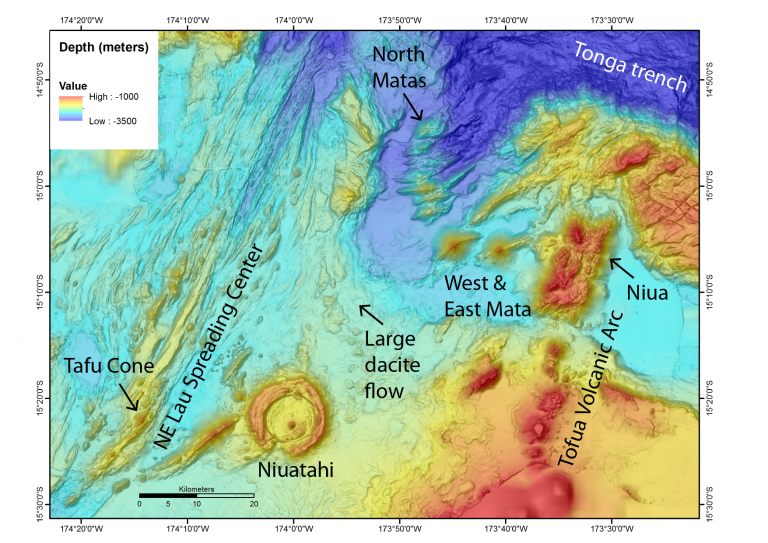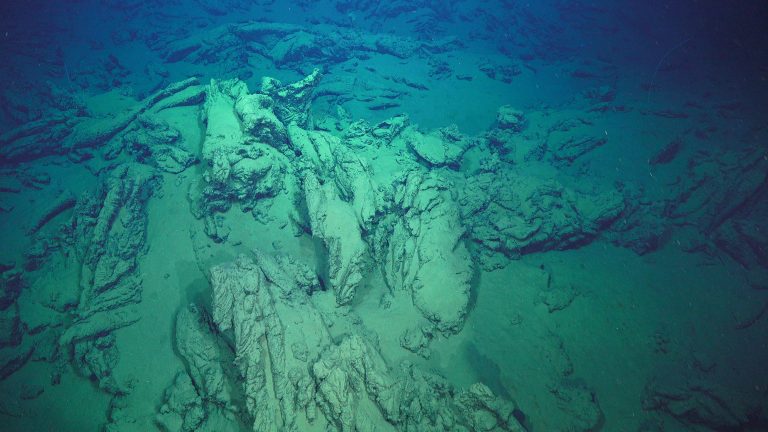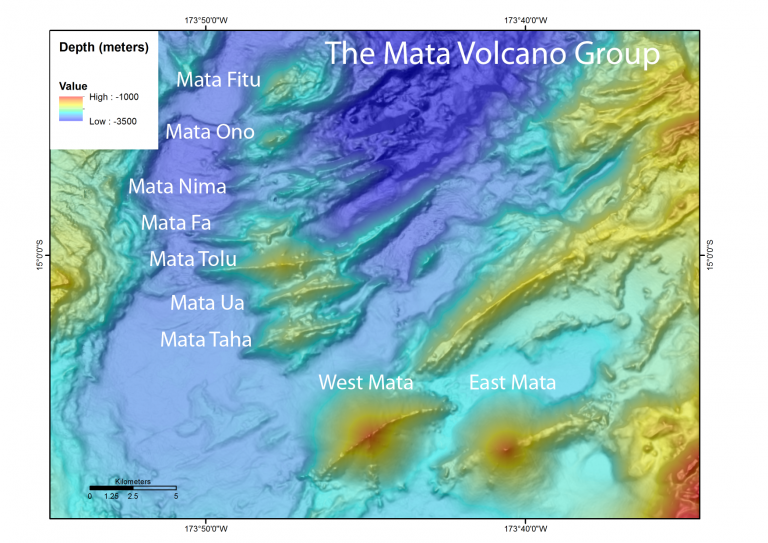We’re making dives with ROV SuBastian in the NE Lau Basin, located between Fiji and Samoa in the waters of Tonga, but you might be wondering where all these volcanoes are. Here’s a map showing the various areas we’ve been diving in, covering the wide diversity of volcanism within this small area.

On the right edge of the map is the volcanic arc, including Niua. We have not made any dives in there during this expedition, partly because Niua have been visited on other expeditions. To the west of Niua in the upper part of the map just to the right of center are the Mata group of volcanoes. West Mata is the most active of the bunch and is the one that has had about an eruption each year during the last decade. East Mata we don’t know as much about, but all signs are that it is a lot less active. The North Mata group (Taha, Ua, Tolu, Fa, Nima, Ono, and Fitu – the names are the numbers 1-7 in Tongan) are seven closely spaced volcanoes just to the north of West Mata. Many of our dives have been at the North Mata volcanoes because we have wanted to study them as a group to compare volcanoes in different stages of their lifetimes and to better understand why some have active hydrothermal systems and others do not. All the Matas have the unusual boninite lava composition.
Intriguing Findings
To the West and SouthWest of the Matas is the province where the large dacite lava flows cover the seafloor. We made one of our ROV dives on the largest of these dacite flows. Dacite is a different lava composition than boninite, but can be derived from it. What is amazing about the dacite flows is how large in area and volume they are. This implies that there must be very large reservoirs of magma in the lower crust of upper mantle in this region. The large dacite flows are also surprisingly fluid in morphology.

Further to the SouthWest is the large caldera named Niuatahi. It has a range of lava compositions, including some large dacite flows, but it too has been visited on previous expeditions so has not been a high priority on this trip. Finally, west of Niuatahi is the NE Lau Spreading Center, which is a ridge-like feature in the back-arc where tectonic plates are spreading apart and there is active volcanism and hydrothermal venting along that linear boundary. Here the lava composition is different again and a composition called basalt is erupted. We decided to make two dives along the NELSC because we discovered two recent eruption sites to the north and south of a cone named Tafu on the spreading center, after comparing new bathymetric data to previous surveys.
The NorthEast Lau Basin probably has the greatest diversity of volcanism in the smallest area of any place on the planet AND has one of the most frequently active submarine volcanoes that we know of. That is why this region is the focus of this expedition. It is full of fantastic volcanic landscapes, full of underwater secrets, but prime for discovery.


